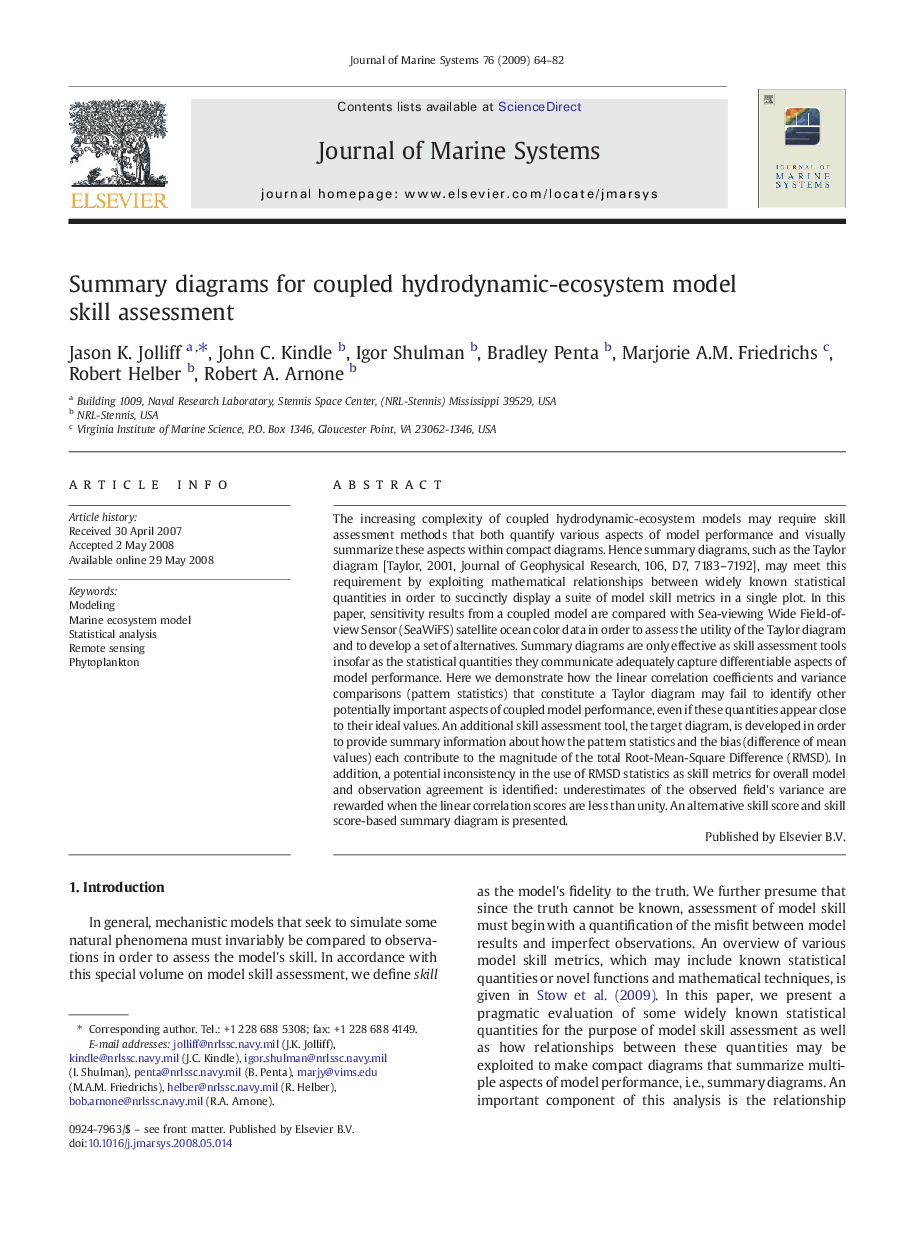| Article ID | Journal | Published Year | Pages | File Type |
|---|---|---|---|---|
| 4548886 | Journal of Marine Systems | 2009 | 19 Pages |
The increasing complexity of coupled hydrodynamic-ecosystem models may require skill assessment methods that both quantify various aspects of model performance and visually summarize these aspects within compact diagrams. Hence summary diagrams, such as the Taylor diagram [Taylor, 2001, Journal of Geophysical Research, 106, D7, 7183–7192], may meet this requirement by exploiting mathematical relationships between widely known statistical quantities in order to succinctly display a suite of model skill metrics in a single plot. In this paper, sensitivity results from a coupled model are compared with Sea-viewing Wide Field-of-view Sensor (SeaWiFS) satellite ocean color data in order to assess the utility of the Taylor diagram and to develop a set of alternatives. Summary diagrams are only effective as skill assessment tools insofar as the statistical quantities they communicate adequately capture differentiable aspects of model performance. Here we demonstrate how the linear correlation coefficients and variance comparisons (pattern statistics) that constitute a Taylor diagram may fail to identify other potentially important aspects of coupled model performance, even if these quantities appear close to their ideal values. An additional skill assessment tool, the target diagram, is developed in order to provide summary information about how the pattern statistics and the bias (difference of mean values) each contribute to the magnitude of the total Root-Mean-Square Difference (RMSD). In addition, a potential inconsistency in the use of RMSD statistics as skill metrics for overall model and observation agreement is identified: underestimates of the observed field's variance are rewarded when the linear correlation scores are less than unity. An alternative skill score and skill score-based summary diagram is presented.
